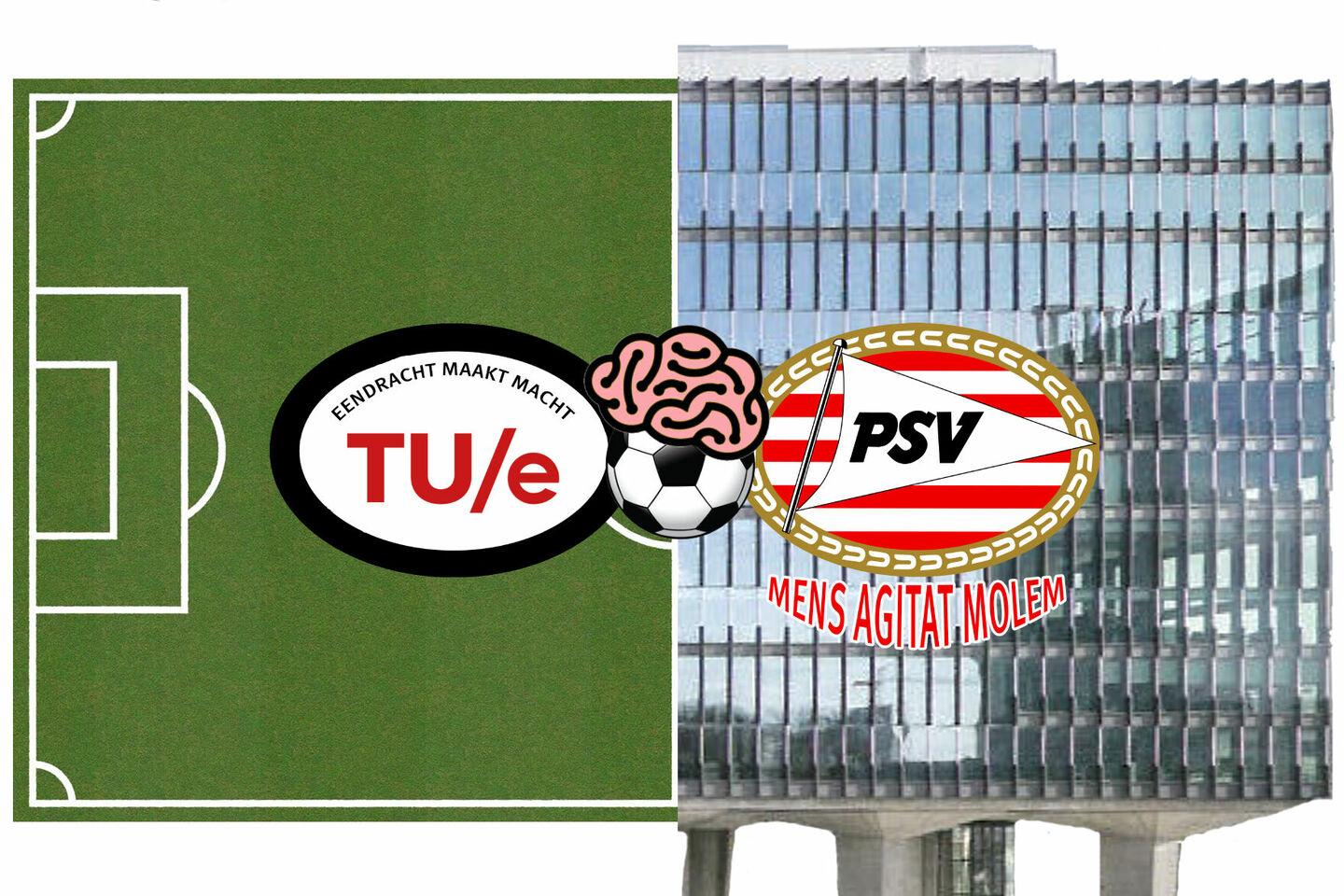
How TU/e and PSV reach for success together
PSV and Ajax go head to head in Amsterdam on Sunday 31 March. The title race puts a lot of pressure on the players of the football club from Eindhoven. TU/e and PSV have joined forces to find a way to tackle this kind of stress so that the players can relax better. The positive results are now turned into a practical solution: the Powerstone. No worries about that penalty!
Things can take an unexpected turn. In life as well as in the Philips Stadion. The partnership between PSV and TU/e started high up in one of the business lounges some years ago. General Manager of PSV Toon Gerbrands and TU/e Chairman of the Executive Board Jan Mengelers decided it was about time that sporting ambitions and scientific knowledge joined forces successfully. Strength through unity.
The Dutch football champion wants to continue their success and therefore welcomes every possible bit of innovation. The club is in luck, because there are more than enough smart partners in the Brainport region. Mathias Funk, Assistant Professor in the Future Everyday group of the department of Industrial Design, and PSV performance manager Luc van Agt head up the partnership. Funk: “Our faculty is an interesting partner for PSV because our research leads to applications that can be used in practice.”
Our faculty is an interesting partner for PSV because our research leads to applications that can be used in practice.
Funk and Van Agt are looking into a few ongoing research projects. “Luc immediately chose ‘biofeedback for relaxation.’ He thought it was great. Mental training is very important to top clubs. During the day, players do their utmost best to get better and stronger. Running, weight training, or concentration exercises. But coaches hardly have any influence on how players spend their evenings and nights. They are left to themselves during those hours,” Funk says.
Field research
Because PSV showed an interest, PhD student of Industrial Design Bin Yu was given the opportunity to conduct a unique field research in 2017. Under supervision of Funk, Full Professor Loe Feijs and Associate Professor Jun Hu, tests are performed to see whether biofeedback for relaxation can effectively reduce stress. In consultation with their coaches, youth players between the ages of 16 and 23 take part in the study. Luc van Agt: “We are not going to experiment on the players of our first team. Their focus is on performing. We are constantly approached with new products, methods and software. That is why our innovation commission carefully evaluates everything and decides with whom we enter into a partnership. It often starts with a small-scale project and a few players from one of our youth teams or Young PSV. If a project proves successful, we try to expand it.”
MindRoom
Part of the TU/e study is an experiment with a so-called MindRoom. This experiment is temporarily conducted in a container due to the comprehensive renovation of the Herdgang, PSV’s training facility. Setting everything up was quite a challenge in itself, Funk remembers. “Biofeedback is a medical method. Normally, you’re hooked to tubes with plasters, and in the company of a doctor in a white coat. That’s far too clinical, and it works counterproductive in research on stress. That is why we opted for a small PPG sensor that fits on a finger and uses infrared light to measure the heartbeat.”
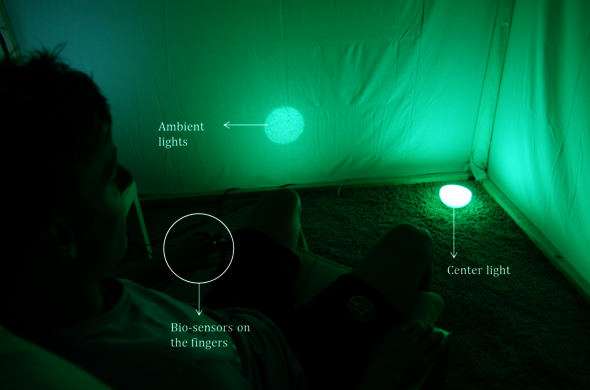
The search for an ideal test setup also revealed that the use of sound, vibration or movement has a disruptive effect in the MindRoom. That is why heartbeat and breathing are connected to natural light and a small spotlight directed at the test subject, who is seated in a comfortable chair. Funk: “The moment you start to breath, the light moves along with you. From the center to the edge of the room and back again. The light dims and gets stronger synchronously with your breathing. The color of the light depends on how relaxed you are. A very powerful experience for people who take part in the test, and it’s very successful as well. You get biofeedback that wasn’t there before and it made sense to the participants. We got many positive responses.”
Writing backwards
Funk: “We needed to build up the player’s stress first, without crossing ethical lines. That’s not so easy. We gave them a game console with a difficult football game, but interestingly enough, that made them very relaxed. Then we switched to standard methods such as writing or drawing backwards. The brain needs to correct every movement your hand makes. The moment we detected stress, a test subject was allowed to enter the MindRoom.”
Data was collected with baseline measures and subsequent stress tests in the test setup. Funk: “The human body is not a machine. Everyone reacts differently to stress, and it’s difficult to capture that in general terms. So how do you calculate the hardware parameters and the curve that indicates how much your pulse varies? That’s the point where it becomes interesting to us. Because building a bridge between humans and machines is exactly what Industrial Design tries to do.”
Tapping into knowledge
PSV also expects to make progress in this field of research. Van Agt: “We are located in the middle of a highly technological region and we work together with prominent partners so that we can learn from each other. Fontys (IT and Sports Faculty), St. Anna hospital (sports medicine and healthcare), Mental Health and Addiction Care Eindhoven, and sleep expertise center Kempenhaege are our partners in the search for innovations that help improve our players. For instance, we developed an advanced tracking system with a number of variants that enable us to follow our players on the pitch, and to measure and analyze their performances.”
Van Agt sees progression but is not satisfied yet. “There is so much knowledge in this region, but how do we successfully tap into it? We want to improve and intensify our partnership with TU/e. Unfortunately, our schedules do not match. Our summer break coincides with the exam period at universities. And internships pose a problem as well. We need to coordinate this and find a different format. We prefer not to have an educational project that involves a full professor because he or she needs to spend too much time on finances and teaching. We have more faith in student projects with an interdisciplinary approach. We’ve noticed that this really works.”
PSV does not only wish to improve their players, they also have plans for their own stadium. The club strives to accomplish a simultaneous growth of sustainability, fan experience and even the grass on the pitch. Van Agt: “FieldLab was set up for our own advantage, but with the underlying idea that it would have a region-wide purpose.”
Brainport
The transition from theory to practice is about to happen for the MindRoom. After the successful experiments in the test setup, the time has come to realize a practical implementation that can be commercially expanded. Martijn van Groen from Houten sees potential. For years, he advised starting entrepreneurs in the field of innovation. “I was all fired up to start with an exciting project, and what better place than a high-tech region such as Brainport with its many innovative projects? I contacted economic development agency Brainport Development and was later told about the MindRoom by the Innovation Lab. I gave the test setup a try and was sold immediately.”
More than a year has passed. Van Groen received a starting grant of 50,000 euros from metropolitan region Eindhoven (MRE) for product development. The result: the Powerstone. The first prototypes will be ready for testing by April. The product was designed and produced in cooperation with Mathias Funk, ergonomics students of the Avans University of Applied Sciences, and Bureau Moeilijke Dingen, a startup headed by Industrial Design alumni.
Powerstone
The Powerstone looks like a polished stone that fits in the palm of your hand. Inside the stone are electronics, sensors, leds, and a battery. Martijn van Groen: “The Powerstone switches on the moment you pick it up. A sensor monitors your heartbeat, an algorithm determines the stress level and the breathing rhythm with which you can lower that stress level. Vibrating signals then tell you when to breath. The Powerstone uses colored light to determine your level of relaxation. It is a breathing exercise that will help you relax in five to ten minutes.”
These kinds of breathing exercises have been around for centuries, right? “To measure is to know,” Van Groen says. “The Powerstone uses the body to measure stress level. You can now see the effect of the breathing exercises and you can determine how well you’ve been practicing. Powerstone really adds something to what is essentially a physical training. Van Groen chose the name Powerstone because he believes it sounds forceful. “In the macho world of football, people often laugh at meditation, yoga, Zen and mindfulness. ‘Powerstone’ sounds less wooly.”
How much does it cost?
During the coming months, tests will show whether one type fits all users. Possible adjustments could be made to the device’s design and weight. The Powerstone is a standalone device fitted with Bluetooth that can be connected to a VR headset and a training program in the future. Van Groen is still thinking about a marketing plan, but he believes that many parties might be interested. First the high-end users, such as the police and the ministry of defense, where people have physically and mentally stressful jobs. Then the general public.
Of course, the obvious question arises: how much does it cost? “I hope to sell the first devices by the end of the year, and I believe the early adopters will pay between 150 and 200 euros for it. Should the Powerstone become a success, I will be able to get the price down by scaling up,” Van Groen says. He has high expectations. “Stress reduction is booming. We have to process so much information in our 24-hour economy. People often feel the need to pause for a moment but don’t know how to do this.”
Modern ideas
PSV’s youth players will take part in user tests during the coming months. Van Agt: “We know that stress has a negative influence on a player’s performance. We want to remove that obstacle. The Powerstone can help with that. Players learn how to recognize stress and they can train to reduce it. After they become used to it, they no longer need the device to reduce their stress level on the pitch.”
He believes the conservative word of football is skeptical when it comes to these kinds of modern ideas. Van Agt also expresses a reservation. “Perhaps it can help improve a player’s qualities and performance. But it’s also a fact that we would never be where we are today without an innovation such as this. In the past, you could test cyclists and distance runners on a home trainer or treadmill in a lab. That wasn’t possible for other sports, such as football. The gap between the lab and the pitch has been bridged thanks to technology. You see ever more scientific influences, such as data analysis, in the world of sports. Both worlds have slowly converged, but you need to understand each other’s language.”

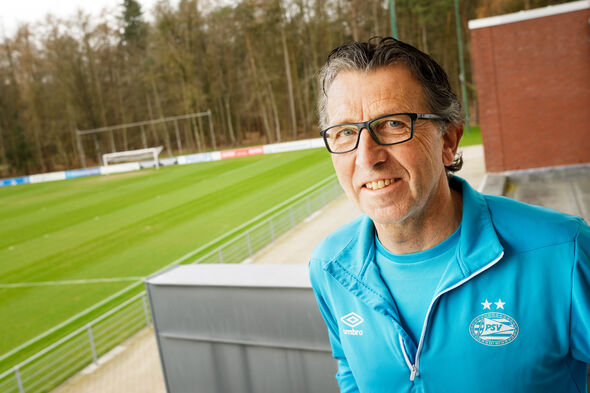
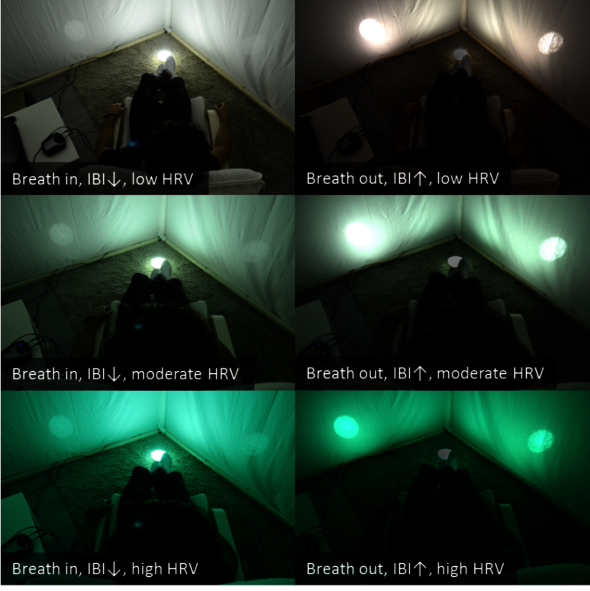
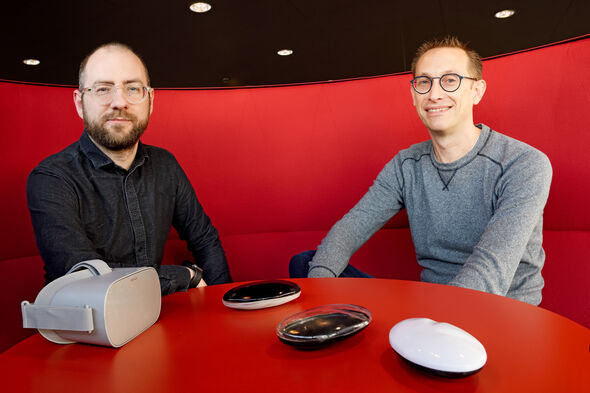
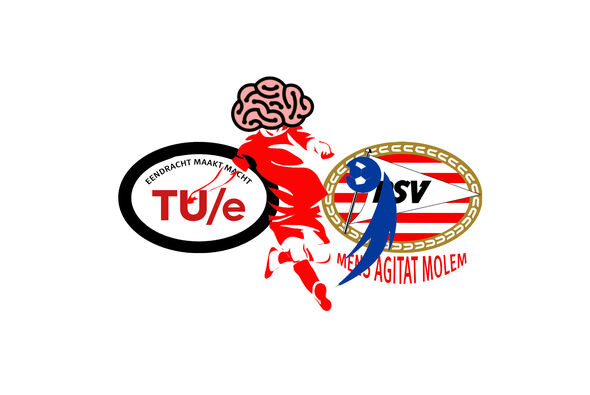
Discussion